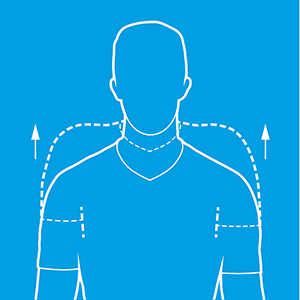Healthier workplaces
Promoting desk exercises

Research suggests that many people spend more than seven hours a day sitting at their desk1 at an office or working from home. As you might imagine, being this sedentary isn’t great for our health, and can lead to shoulder, neck or back pain.2 Estimates suggest that 23 million working days are lost each year due to problems with muscles and bones.3
The following stretches can help to reduce the likelihood of injury. Why not share these with your colleagues and encourage them to try some of these desk exercises?
1. Seated spinal rotation
- While sat down, cross your arms across your chest.
- Hold your shoulders.
- Rotate the top half of your body, turning gently from left to right as far as possible.
- A feeling of tension should emerge on both side of your lower back as it stretches out.
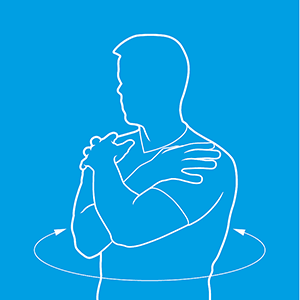
2. Posterior shoulder stretch
- Reach one arm across your body.
- Pull both elbows inwards towards your chest.
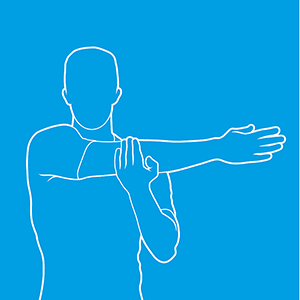
3. Shoulder shrugs
- Gently raise your shoulders.
- Let them gradually drop.
- You should feel the tension being released as your shoulders fall.
4. Sitting back extensions
- Sit upright with your feet together.
- Place the palms of your hands into the small of your back.
- Lean back over your hands and feel the lower back stretch out.
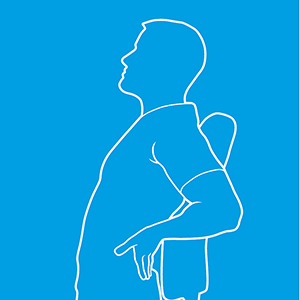
5. Neck rotations
- Keep your head straight.
- Gently turn your head from one side to the other.
- As you do this, try to move your head beyond your shoulder.
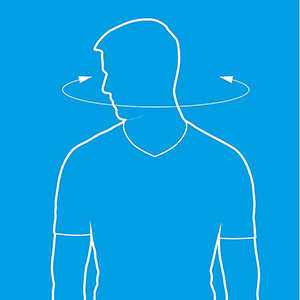
6. Upper shoulder and neck stretch
- Sitting on one hand, tilt your head slightly forward in the other direction.
- You should feel your neck and shoulder muscles stretching.
- Change sides and repeat.
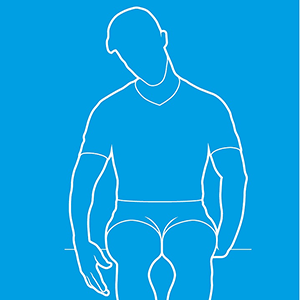
7. Shoulder extension – one
- Standing up, stretch your arms out behind you.
- Hold your hands together and gently raise your arms.
- You should feel the pressure in your shoulders ease.
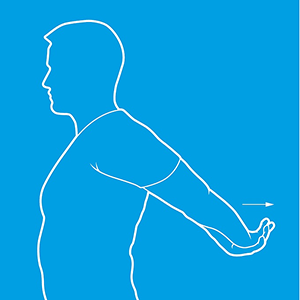
8. Shoulder extension – two
- Raise both arms above your head.
- Link your hands with your palms facing up.
- Stretch as high as possible.
- You should feel your shoulders stretching.
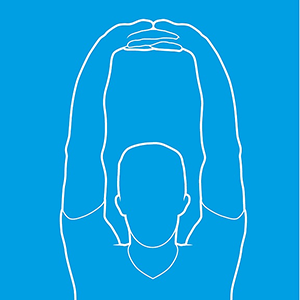
The ideal desk setup
It’s important to ensure that everyone whether in the office or working from home is set up comfortably at their workstation. This can prevent back pain among other problems. Here are some steps to help you:
- the chair should be close to the desk.
- the height should be adjusted to ensure your feet are fully on the floor.
- the top of your computer screen should be level with your eyes, and about an arms-length away.
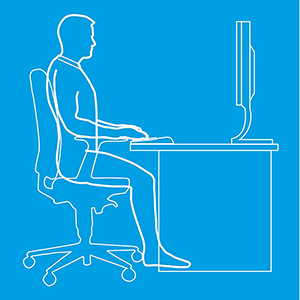
Promoting good posture
Good posture can also help prevent injuries.
1. Your hips should be above your knee.
2. You should be sat right back in the seat, so your whole back is supported.
3. The natural curve of your lower back should fit against the curve of the back rest.
4. The back rest should be slightly reclined (10–15 degrees).
5. Your shoulders should be relaxed, with your elbows at 90 degrees, just above the desk.
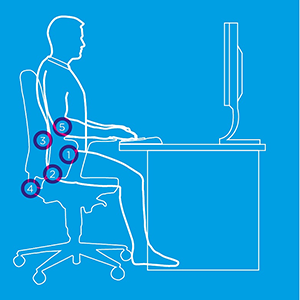
Avoiding leaning across the desk
Desks should be arranged with everything in easy reach.
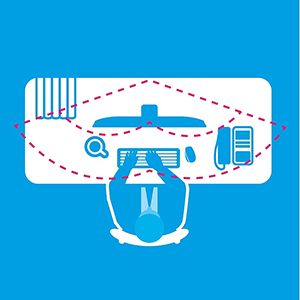
Encouraging breaks
We should all have a short pause for every five minutes of intense work on a computer. Even if this just means stretching your hands, wrists and fingers, rolling your shoulders and rotating your neck.
- Give your eyes a break every 20 minutes, by looking into the distance for 20 seconds.
- Every half hour or so, stand up, stretch and move for 20–30 seconds.
- Keep alert by doing gentle exercises every two hours.

For anyone who develops neck or back pain, a GP or physiotherapist can provide more advice and support.
References
1Health matters: getting every adult active every day. Public Health England. Published 19 July 2016. www.gov.uk/government/publications/health-matters-getting-every-adult-active-every-day/health-matters-getting-every-adult-active-every-day
2Hanna F, Daas RN, El-Shareif TJ, et al. The Relationship Between Sedentary Behavior, Back Pain, and Psychosocial Correlates Among University Employees. Front. Public Health 2019 https://doi.org/10.3389/fpubh.2019.00080
3Office for National Statistics. Sickness absence in the UK labour market: 2021. ReleasedApril2022. https://www.ons.gov.uk/employmentandlabourmarket/peopleinwork/labourproductivity/articles/sicknessabsenceinthelabourmarket/2021
Want to find out more information on our business products and services?
Small business
We have a wide range of health products and services for businesses that want to cover between 2-250 employees.
Learn more
Corporate services
We also have a wide range of healthcare solutions designed for businesses that are looking to cover more than 250 of their employees.
Learn more
Bupa Connect for intermediaries
Bupa Connect gives you the freedom to manage your business clients. You can create quotes, renew and update your clients’ details instantly. It’s quick, easy and helps you do business your way.
Learn more


